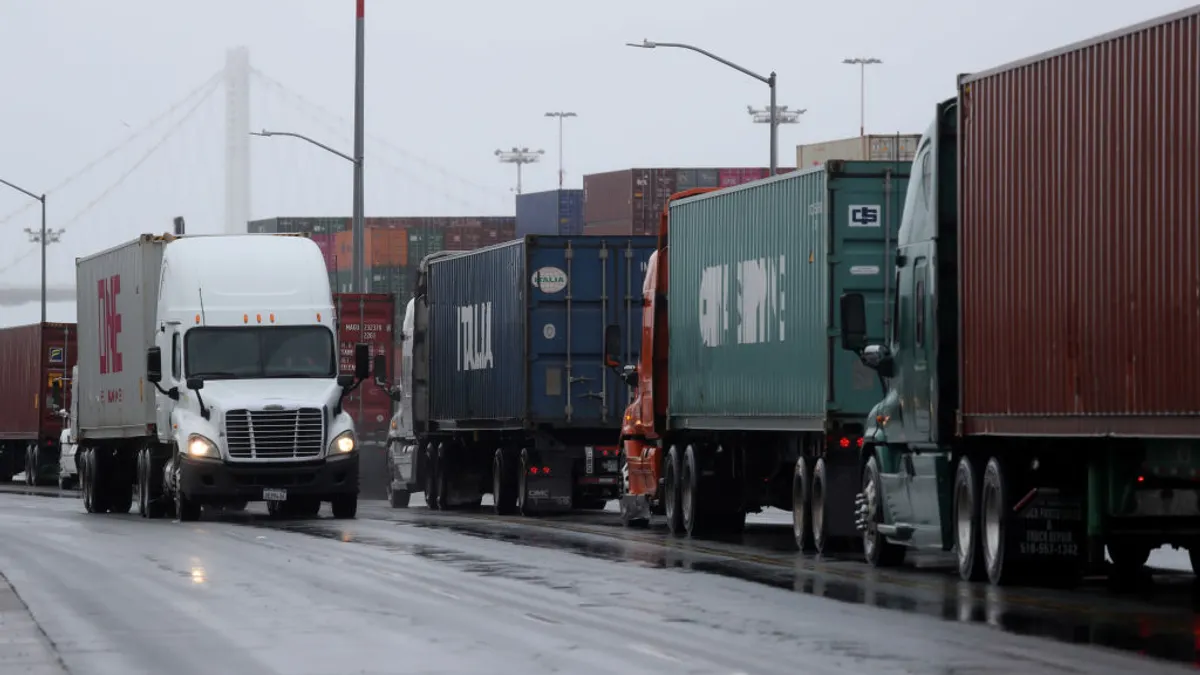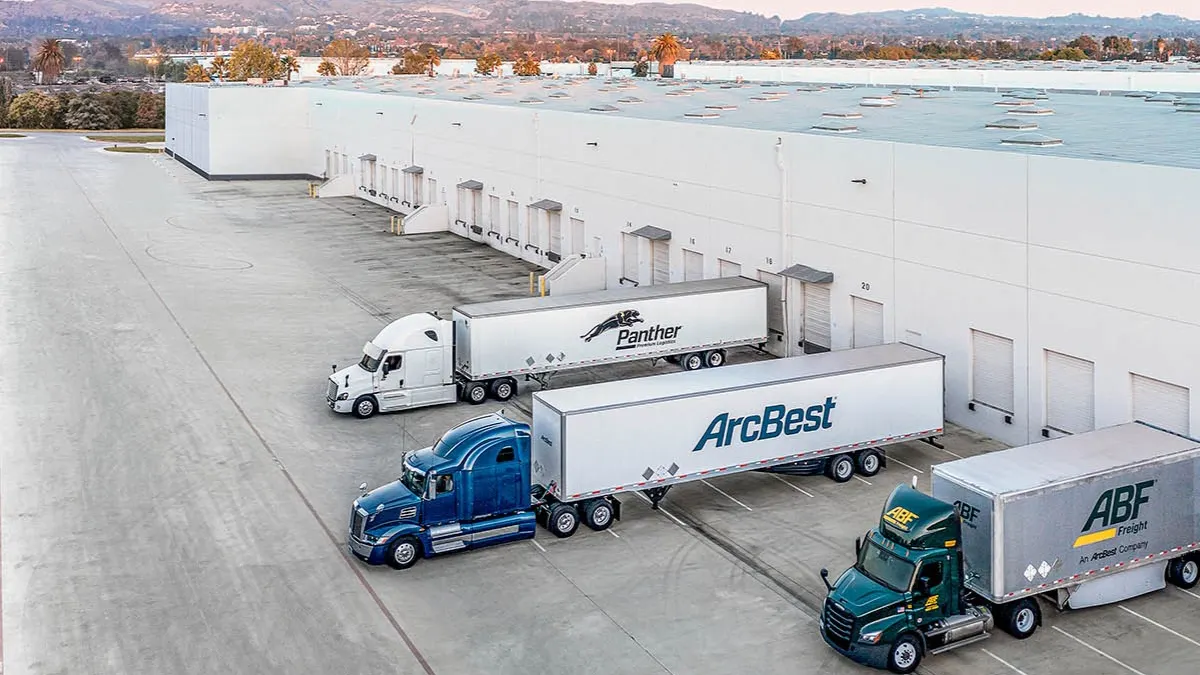With global oil prices jumping to over $100 per barrel on Tuesday, largely due to the war in Ukraine, pressure will be on fleets and small carriers to conserve diesel as much as they can to protect margins.
The higher oil prices translate directly to higher diesel prices, as they have for months. On Monday, the Energy Information Administration reported U.S. diesel prices were $4.104 per gallon, up 4.9 cents in a week, and $1.032 from a year before. Diesel prices are likely to go higher as Russia and Ukraine continue to fight, and as oil companies pull business from Russia, the third-largest oil producer in the world, after the United States and Saudi Arabia.
Gasoline is also shooting up, at $3.608 per gallon, up 7.8 cents from the previous week, and up 89.7 cents from the comparable week a year ago. Not surprisingly, prices in California are significantly higher than the norm: Diesel is $5.077 per gallon in the Golden State.
Fuel is the second-largest expense for a fleet, after driver wages. Fuel costs a truck 43.3 cents per mile, or about 24% of a truck's expenses, according to the American Transportation Research Institute's November 2019 report.
Fleets are usually keen to squeeze every mile they can out of a tank of diesel, and they do this by buying newer fuel-efficient trucks and adding features, such as wheel covers, that cut down on air resistance. But it's a struggle. ATRI found that miles per gallon stalled in 2018 from 2017, remaining at 6.4 mpg.
Big fleets usually have pricing deals with fuel suppliers, and they have fuel surcharges written into contracts. But not everyone does. The recent surge in diesel prices has the phones ringing at the Owner-Operator Independent Drivers Association, with drivers asking how to attach fuel surcharges to their per-mile rates.
"It will hit the small guys hard," said Lewie Pugh, executive vice president of OOIDA. "I'm sure there is more to come. It's going to affect members."
"Some customers wouldn't pay a fuel surcharge, some would."

Lewie Pugh
Executive Vice President at the Owner-Operator Independent Drivers Association
Pugh said the rising fuel costs will pinch everyone, including shippers and big fleets. The small trucker may get hit the hardest, however. He found that, when he was an independent owner-operator, "some customers wouldn't pay a fuel surcharge; some would."
For now, fleets in general will pass the costs on to shippers via fuel surcharges, said Tim Denoyer, ACT Research vice president and senior analyst. But those surcharges do not cover empty miles, and those fuel costs can squeeze margins of profitability.
Diesel prices were already rising through 2021, and, for the bigger fleets, the latest earnings cycle didn't show a major effect in Q4. However, some executives spoke of trends they saw partially caused by higher fuel costs. At J.B. Hunt, fuel prices were putting pressure on shippers to consider intermodal over trucks.
"As an organization, we see tremendous pent-up demand to convert highway freight to intermodal with elevated truck rates, the tight labor market, higher fuel prices and a 60% improvement in carbon efficiency intermodal offers versus truck," said Shelley Simpson, J.B. Hunt's chief commercial officer and EVP for people and human resources, during the company's investor call on Jan. 19.
But the increase in fuel charges has tended to bump up general revenues for big fleets, especially with e-commerce still booming within the economic recovery. J.B. Hunt reported $3.5 billion in revenue in Q4, up 28% from a year before.
'The sky is the limit'
The general effect of high oil prices on the U.S. and world economies concerns oil analysts. A drop in consumer sentiment could impact truckers quickly, if consumers slow down shopping to save money.
Phil Flynn, an oil analyst at the Price Futures Group, said he sees no immediate decrease in prices, at least not ones caused by sudden peace in Ukraine or an increase in oil production.
"The sky is the limit," said Flynn. "It's being based on fear and the unknown."
The one thing that could bring prices down is demand destruction, Flynn said, something that often augurs a recession, as it did in 2008 when oil prices peaked around $150 per barrel. Demand destruction, caused by high fuel prices, can mean fewer consumer purchases and less freight moving.
Denton Cinquegrana, chief oil analyst with OPIS, agreed.
"As it currently stands, demand destruction is the only thing that could cool off prices," said Cinquegrana. "There's not much you can do if the economy is growing."
To complicate matters, a portion of U.S. diesel stock is imported from Russia, said Cinquegrana. In 2021, the U.S. imported an average of 209,000 barrels per day of crude oil and 500,000 per day of other petroleum products from Russia, according to the American Fuel & Petrochemical Manufacturers. That small share could be ended if the federal government decides to push private companies to end diesel imports from Russia.
Even that little bit could hurt, as diesel supplies are tight, said Cinquegrana.
Flynn said the oil-price spike was not a surprise to him because it was "an accident waiting to happen." The Biden administration took office a year ago, he said, and cut down on oil and gas production, most dramatically by canceling the permit for the expansion of the Keystone XL oil pipeline from Alberta, Canada.
A release of 50 million barrels from the U.S. Strategic Petroleum Reserve in November did little to slow down prices, Flynn said.
On Tuesday night, in his State of the Union address, President Joe Biden announced the United States agreed with 30 other countries to release 60 million barrels of oil from world reserves.
"America will lead that effort, releasing 30 million barrels from our own Strategic Petroleum Reserve," said Biden. "And we stand ready to do more if necessary, unified with our allies."
The announcement did not immediately calm oil markets, as West Texas Intermediate oil broke $109 per barrel by Wednesday afternoon.

















